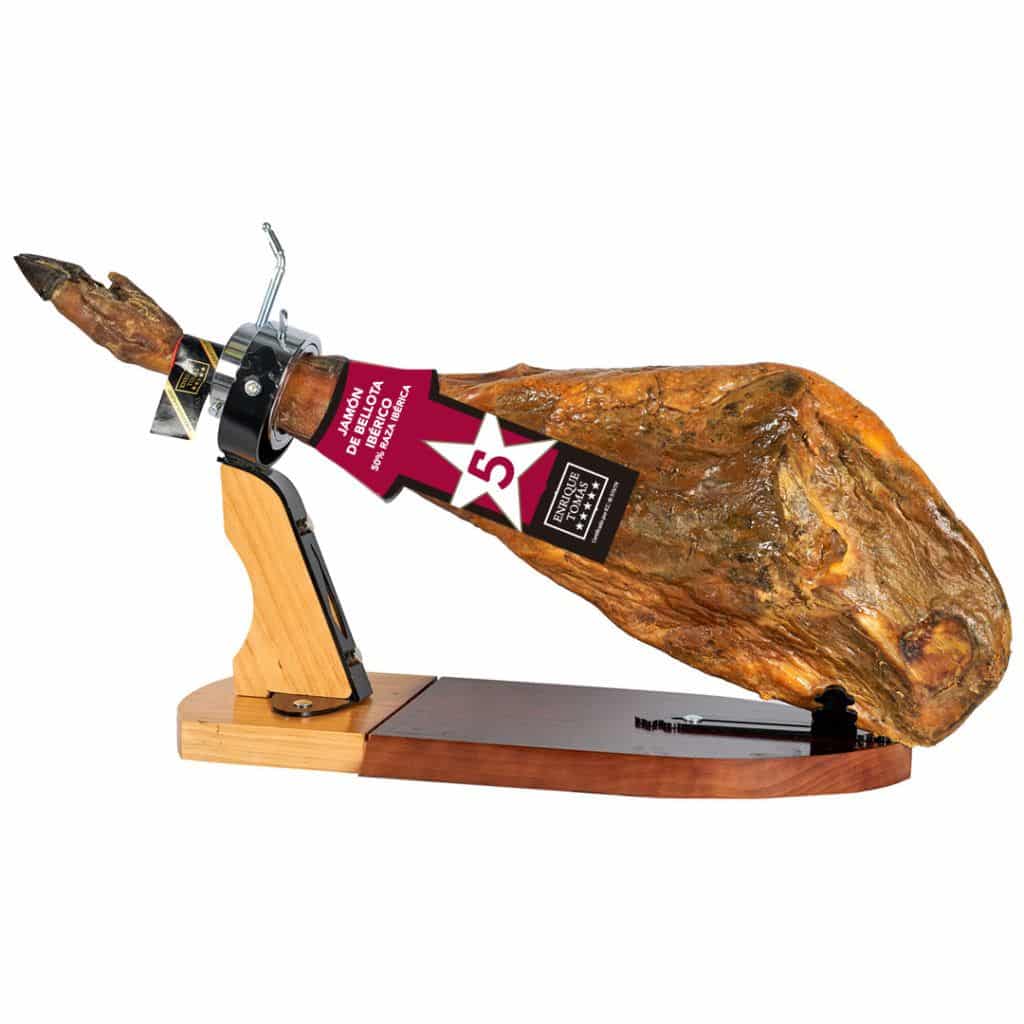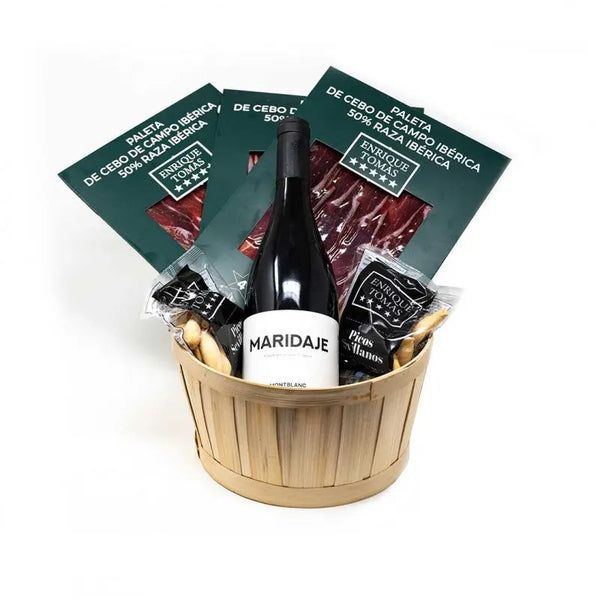
Differences between Iberian ham shoulder (paleta) and Iberian Jamón
Many customers, before buying Iberian ham or Iberian shoulder, often ask us what the differences are between the two, especially from a quality perspective, whether for home consumption or as a gift. Our answer is always the same: in terms of breed, it's the same product, but in all other aspects, they are completely different products.
Obviously, the part of the pig they come from is different, as well as their taste and curing time, with the latter being the determining factor along with weight in the price difference between an Iberian shoulder and an Iberian ham.
Let's break down each of the differences!
Which is Better, Iberian Ham or Iberian Shoulder?
They are completely different products, although they come from the same Iberian pig, a unique breed known for its exclusive ability to infiltrate fat into the muscle. This makes both Iberian ham and Iberian shoulder known for their tastier and juicier meat, incomparable to any other ham on the market.
Neither is better than the other; they are simply different. Whether one is better or worse will depend on the diner's taste or whether the piece is at its optimal curing point. What do we mean by the latter? Simply that, even if we prefer the shoulder to the ham, at a given moment, we might like the ham more, and vice versa. It's like when we make paella, and we always use the same ingredients, but for no apparent reason, one day we say, "Wow, it turned out really delicious today!"
Master ham artisans also play with circumstantial factors to prepare and cure each piece: the final weight of the animal, the percentage of Iberian breed, the climate, etc. That's why at Enrique Tomás, we say that there are no two identical hams, nor two identical shoulders; not to mention a shoulder and a ham.
 5-star Acorn-fed Iberian Ham by Enrique Tomás
5-star Acorn-fed Iberian Ham by Enrique Tomás
The Basic Differences Between Iberian Shoulder and Ham
To decide which one to choose, let's outline the characteristics of each one to get to know them better:
Origin
Being both parts of the same Iberian pig, the ham is the hind leg of the animal, and the shoulder is the front leg.
Size
Iberian ham usually weighs approximately 7 to 8.5 kg. The shoulder, on the other hand, weighs from 4 to 5.5 kg. Since the morphology of the shoulder is smaller, narrower, and less rounded than that of the ham, the slices are somewhat smaller and thinner as well. Regarding length, the shoulder measures between 60 and 75 cm, compared to the ham's 70 to 90 cm.
Taste
In our opinion, this is the factor that distinguishes both extremities the most, even more than price. It will depend, therefore, and we insist on this, on the diner's taste. In the case of the shoulder, being slightly smaller than the ham, the meat is closer to the bone, which facilitates the rapid absorption of salt and infiltrated fat. Hence, the more intense red color that shoulders tend to have compared to ham. This, in turn, directly influences the flavor; the fat is still present in each slice, but its meat is more cured, and therefore, its taste is more intense on the palate compared to ham.
Curing
The curing process for an Iberian shoulder with feed takes about 18 months, and for an Iberian acorn-fed shoulder, about 24 months. In contrast, Iberian ham with feed takes about 24 months, and Iberian acorn-fed ham takes 36 months. Logic dictates that the more weight, the longer the curing time.
Price
Taking into account all of the above, it should now be clearer why the price of Iberian ham is higher than that of the shoulder. It's not the quality that determines the price, but the size and curing time that a master ham artisan has invested in transforming a piece of meat into a gastronomic gem like an Iberian shoulder or ham. Thus, we now understand why 100% Iberian acorn-fed hams are the most expensive, not only due to the breed percentage but also because experts have taken three years to achieve such excellence.
Number of Diners
When buying a ham or a shoulder, we should also consider how many people are in our household and how often we will be slicing ham. It's not trivial! If there are one, two, or three people, it is advisable to choose a shoulder, both for its size and because it is advisable not to exceed 17 days of consumption if we want to maintain the texture and flavor of the meat to the fullest, and of course, avoid spoilage if we don't slice nearly 100g daily.
If there are more than three people or if we will have many guests, the ham serves its purpose better, but always taking into account daily or almost daily consumption of about 150g, for the same reason as the shoulder. Its shelf life should not exceed three weeks, even less in summer.
It's just a recommendation! Because there are different tastes. Likewise, there is another option, which we recommend at Enrique Tomás in these cases, and that is to order our piece already sliced and vacuum-packed. This way, we will consume it only when we feel like it and won't have to be so concerned about time.






